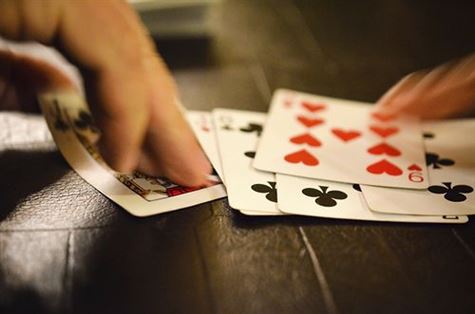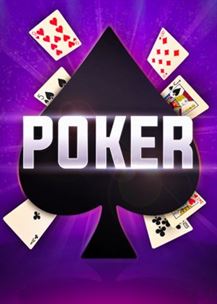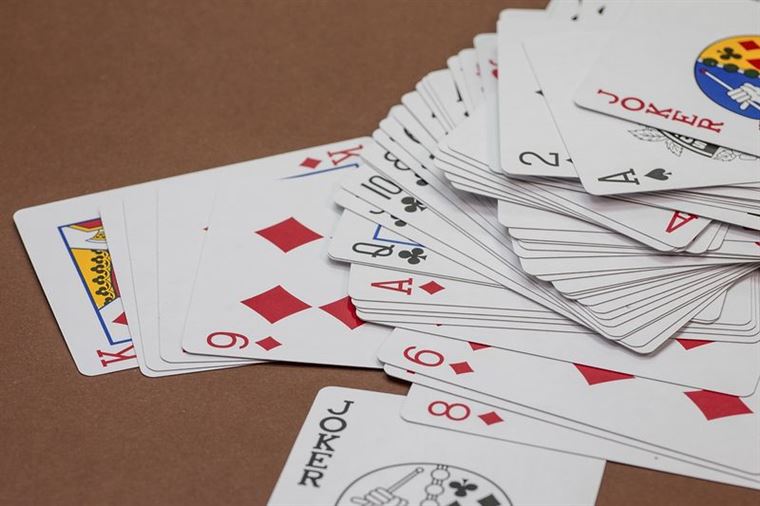Maximizing profits in any form of gambling or strategic decision-making often requires a solid understanding of pot odds and expected value. These concepts are crucial in determining the profitability of various actions, whether it be in poker, sports betting, or even investing. In this article, we will demystify pot odds and expected value, providing you with a clear understanding of how to use these tools to maximize your profits and make informed decisions.
Understanding Pot Odds and Expected Value in Poker
Poker, often considered a game of skill and strategy, requires players to make calculated decisions based on various factors. One such crucial aspect is understanding pot odds and expected value, which can greatly influence a player’s profitability. In this article, we will demystify these concepts and explore how they can be utilized to maximize profits.
Pot odds refer to the ratio between the current size of the pot and the cost of a contemplated call. They help players determine whether it is mathematically profitable to continue playing a hand or fold. To calculate pot odds, one needs to compare the amount needed to call with the total amount in the pot, including any potential bets from opponents.
For example, if the pot contains $100 and an opponent bets $20, the total pot size becomes $120. If a player wants to call the $20 bet, their pot odds would be 120:20, or 6:1. This means that for every dollar they invest, they stand to win six dollars if successful.
The key to utilizing pot odds effectively lies in comparing them to the odds of completing a particular hand. By estimating the likelihood of making a winning hand, players can determine whether the potential payout justifies the investment. This estimation involves considering the number of outs available – cards that could improve their hand – and calculating the probability of hitting those outs.
Expected value (EV) complements pot odds by providing a long-term perspective on profitability. It represents the average amount a player can expect to win or lose over time when repeating a specific situation multiple times. Calculating EV involves multiplying the potential gain or loss by its respective probability and summing up all possible outcomes.
To illustrate, let’s say a player has a flush draw with nine outs after the flop. With two cards remaining, their chances of hitting the flush are approximately 19%. If the pot odds are favorable, let’s say 4:1, the expected value would be positive. This means that over time, if the player were to repeat this situation multiple times, they would expect to make a profit.
However, it is important to note that EV calculations should consider not only the immediate hand but also potential future bets and scenarios. By incorporating these factors into their decision-making process, players can better assess whether a particular play is profitable in the long run.
In addition to understanding pot odds and expected value, poker players must also consider other variables that can impact profitability. Other variables that can significantly impact profitability include the playing style of opponents, table dynamics, position at the table, and stack sizes. These factors influence the likelihood of success and should be carefully considered when making decisions based on pot odds and expected value.
For instance, if a player has a strong hand with favorable pot odds, but their opponents have demonstrated aggressive behavior throughout the game, it might be more profitable to raise or re-raise rather than just calling. By factoring in the playing style of opponents, players can exploit their tendencies and maximize their profits further.
Furthermore, considering table dynamics and position can provide valuable insights into how likely opponents are to fold or call. Being in a late position allows players to gather information from previous actions, providing them with an advantage in decision-making. Adjusting one’s strategy based on these factors can lead to more accurate assessments of pot odds and expected value.
Lastly, stack sizes play a crucial role in determining the potential risk and reward associated with a particular play. When facing a bet that exceeds their stack size, players may find themselves committed to the hand regardless of pot odds. Understanding how stack sizes affect the overall profitability of a hand is essential for making informed decisions.
In conclusion, understanding pot odds and expected value is vital for maximizing profits in poker. By calculating pot odds and comparing them to the odds of completing a hand, players can determine whether it is mathematically favorable to continue playing or fold. Additionally, considering expected value provides a long-term perspective on profitability. However, it is crucial to incorporate other variables such as opponent behavior, table dynamics, position, and stack sizes into decision-making processes. By doing so, players can make more informed choices and increase their chances of success at the poker table.
How to Calculate Pot Odds for Maximizing Profits in Poker
In the world of poker, maximizing profits is the ultimate goal. And one key concept that can help achieve this goal is understanding pot odds and expected value. These two terms may sound intimidating to beginners, but they are actually quite simple once demystified.
Pot odds refer to the ratio between the current size of the pot and the cost of a contemplated call. It helps players determine whether or not it is mathematically profitable to continue playing a hand. By calculating pot odds, players can make informed decisions based on the potential return on their investment.
To calculate pot odds, you need to know the current size of the pot and the amount of money you need to put in to stay in the game. Let’s say the pot has $100 and your opponent bets $20. In this case, the pot odds would be 5:1 (100/20). This means that for every dollar you put into the pot, you have the chance to win five dollars.
But how do you know if these pot odds are favorable? This is where expected value comes into play. Expected value is a mathematical calculation that determines the average amount of money you can expect to win or lose over time.
To calculate expected value, you multiply the probability of winning by the amount you stand to gain and subtract the probability of losing multiplied by the amount you stand to lose. If the result is positive, it means you can expect to make money in the long run.
For example, let’s say you have a flush draw and your opponent bets $50 into a $100 pot. You estimate that there is a 25% chance of hitting your flush on the next card. The expected value of calling this bet would be calculated as follows:
(0.25 * $150) – (0.75 * $50) = $37.50 – $37.50 = $0
In this scenario, the expected value is zero, which means that over time, you can neither expect to win nor lose money by calling the bet. Therefore, it would be a neutral decision to make.
However, if the expected value had been positive, say $10, it would indicate that calling the bet is a profitable move in the long run. On the other hand, a negative expected value, such as -$10, would suggest that folding would be the more prudent choice.
By understanding pot odds and expected value, players can make informed decisions that maximize their profits. It allows them to assess the potential return on their investment and determine whether or not a particular play is worth pursuing.
Of course, poker is not just about numbers and calculations. There are other factors to consider, such as reading your opponents’ behavior and making educated guesses based on their actions. However, incorporating pot odds and expected value into your decision-making process can provide a solid foundation for success.
In conclusion, calculating pot odds and expected value is essential for maximizing profits in poker. These concepts allow players to make informed decisions based on the potential return on their investment. By understanding how to calculate pot odds and expected value, players can increase their chances of making profitable plays in the long run. So next time you sit down at the poker table, remember to demystify these concepts and use them to your advantage.
Strategies for Using Pot Odds to Maximize Your Poker Profits
When it comes to poker, one of the most crucial skills that separates the amateurs from the professionals is the ability to calculate pot odds and make informed decisions based on expected value. Understanding these concepts can greatly enhance your chances of maximizing your profits at the table. In this article, we will demystify pot odds and expected value, providing you with strategies to use them effectively.
Pot odds refer to the ratio between the current size of the pot and the cost of a contemplated call. By comparing the potential reward to the risk involved, players can determine whether a particular play is profitable in the long run. To calculate pot odds, divide the total amount of chips in the pot by the amount you need to bet to stay in the hand. For example, if there are 100 chips in the pot and you need to bet 20 chips to continue, the pot odds would be 5 to 1.
Once you have determined the pot odds, the next step is to consider the concept of expected value. Expected value is a mathematical calculation that estimates the average amount you stand to win or lose over time by making a specific play. It takes into account both the probability of winning and the potential payout. To calculate expected value, multiply the probability of winning by the potential profit and subtract the probability of losing multiplied by the potential loss.
Let’s say you have a flush draw with four cards to come, and the pot odds are 4 to 1. You estimate that you have a 25% chance of hitting your flush by the river. The expected value of calling would be calculated as follows: (0.25 * [pot size + your opponent’s bet]) – (0.75 * your opponent’s bet). If the expected value is positive, it means that making the call is profitable in the long run.
To make the most of pot odds and expected value, it is essential to understand how they work together. When the pot odds are higher than the probability of winning, it indicates a positive expected value play. In this situation, calling or even raising would be the correct move. Conversely, if the pot odds are lower than the probability of winning, folding would be the optimal choice, as the expected value is negative.
Another strategy to maximize your profits using pot odds is to consider implied odds. Implied odds take into account potential future bets that you might win if you hit your hand. It involves estimating the additional chips you can expect to win from your opponents on later betting rounds. By factoring in these potential winnings, you can justify calling with less favorable pot odds.
It is important to note that mastering pot odds and expected value requires practice and experience. As you gain more knowledge about your opponents’ playing styles and tendencies, you will be able to make more accurate calculations. Additionally, understanding the concept of reverse implied odds can also improve your decision-making process. Reverse implied odds refer to potential losses that may occur if you hit your hand but still have a high chance of being beaten by a stronger hand.
In conclusion, understanding and utilizing pot odds and expected value can greatly enhance your profitability in poker. By calculating pot odds and comparing them to the probability of winning, you can make informed decisions that lead to long-term success. Incorporating strategies such as considering implied odds and reverse implied odds further refine your decision-making process. Remember, practice makes perfect, so hone your skills and watch your profits soar at the poker table.
The Importance of Expected Value in Maximizing Poker Profits
The game of poker is not just about luck and intuition; it is a strategic battle of wits where players must carefully analyze the odds and make calculated decisions. One of the key concepts in poker strategy is expected value (EV), which plays a crucial role in maximizing profits.
Expected value, also known as EV, is a mathematical concept that helps determine the potential profitability of a particular decision. In poker, EV represents the average amount of money a player can expect to win or lose over the long run. By understanding and utilizing EV, players can make informed decisions that will increase their chances of winning and ultimately maximize their profits.
To calculate EV, one must consider both the pot odds and the probability of winning the hand. Pot odds refer to the ratio between the current size of the pot and the cost of a contemplated call. For example, if the pot contains $100 and the cost of a call is $20, the pot odds would be 5:1. If the probability of winning the hand is greater than 1 in 5, then calling would have a positive expected value.
Let’s say you are playing in a Texas Hold’em game and are dealt pocket aces. Your opponent goes all-in with a smaller stack, and you must decide whether to call or fold. By calculating the pot odds and assessing your chances of winning, you can determine the EV of each decision.
If the pot currently holds $200 and your opponent’s all-in bet is $50, the pot odds would be 4:1. Now, let’s assume that after careful analysis, you determine that you have an 80% chance of winning the hand. To calculate the EV, you multiply the probability of winning by the potential profit and subtract the probability of losing multiplied by the potential loss.
In this case, the potential profit is $250 ($200 from the pot plus your opponent’s $50 bet), and the potential loss is $50. Therefore, the EV of calling would be (0.8 * $250) – (0.2 * $50), which equals $190 – $10, resulting in an EV of $180.
If you fold, your EV would be zero since you have no chance of winning or losing any money. However, by calling and utilizing the concept of expected value, you can maximize your long-term profitability.
Understanding EV allows players to make rational decisions based on mathematical calculations rather than relying solely on intuition or emotions. By consistently making positive EV plays, players can gradually increase their profits over time.
It’s important to note that while EV is a valuable tool for decision-making, it does not guarantee immediate success. In the short term, luck can still play a significant role in determining outcomes. However, over the long run, consistently making positive EV decisions will lead to increased profitability.
In conclusion, expected value is a fundamental concept in poker strategy that helps players maximize their profits. By calculating the pot odds and assessing the probability of winning, players can determine the EV of each decision and make informed choices. While luck may influence short-term results, understanding and utilizing EV will lead to long-term success at the poker table. So next time you’re playing a hand, remember to consider the importance of expected value in maximizing your profits.
Applying Pot Odds and Expected Value Concepts to Improve Your Poker Game
Poker is a game of skill, strategy, and calculation. To be successful in this game, players need to make informed decisions based on the probabilities and potential outcomes of each hand. This is where the concepts of pot odds and expected value come into play. Understanding these concepts can significantly improve your poker game and help you maximize your profits.
Pot odds refer to the ratio between the current size of the pot and the cost of a contemplated call. It is a way to determine whether making a particular bet or call is profitable in the long run. By comparing the potential payout to the cost of participation, players can make rational decisions that are based on mathematical principles rather than emotions or hunches.
To calculate pot odds, you simply divide the amount you need to call by the total size of the pot (including your opponent’s bet). For example, if your opponent bets $50 into a $200 pot, you would need to call $50 to stay in the hand. In this case, your pot odds would be 1:4 (or 25%). This means that for every four times you call, you need to win at least once to break even.
Expected value, on the other hand, takes into account both the probability of winning a hand and the potential payout. It is a measure of the average amount of money you can expect to win or lose over the long term. By calculating the expected value of different actions, players can determine which decision will yield the highest profit in the long run.
To calculate expected value, you multiply the probability of winning a hand by the potential payout and subtract the probability of losing multiplied by the amount you stand to lose. For instance, if there is a 30% chance of winning a $100 pot and a 70% chance of losing your $50 bet, your expected value would be $10 ($30 – $35).
By combining pot odds and expected value, players can make more informed decisions at the poker table. For example, if the pot odds indicate that you have a 25% chance of winning a hand and the expected value is positive, it would be profitable to make the call. On the other hand, if the pot odds suggest a low probability of winning and the expected value is negative, folding would be the wise choice.
It’s important to note that while pot odds and expected value are valuable tools for decision-making in poker, they are not foolproof. Variance and luck still play a significant role in the outcome of individual hands. However, over the long term, consistently making decisions based on these concepts will increase your chances of being a profitable player.
To apply pot odds and expected value effectively, it’s essential to have a good understanding of probabilities and be able to calculate them quickly. This requires practice and experience. By studying hand histories, analyzing previous games, and working through different scenarios, you can develop a better intuition for when to make certain bets or calls.
In conclusion, mastering the concepts of pot odds and expected value is crucial for maximizing profits in poker. By using these principles to make rational decisions, players can avoid costly mistakes and increase their chances of long-term success. Remember, poker is not just a game of luck but also a game of skill and strategy. So next time you’re at the poker table, don’t rely solely on your instincts – let pot odds and expected value guide you towards victory.




